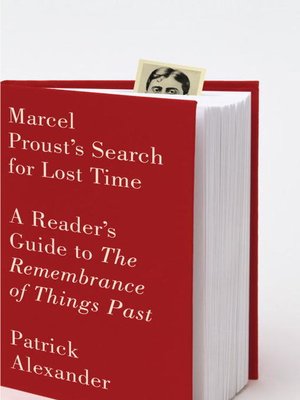Marcel Proust's Search for Lost Time
ebook ∣ A Reader's Guide to The Remembrance of Things Past
By Patrick Alexander

Sign up to save your library
With an OverDrive account, you can save your favorite libraries for at-a-glance information about availability. Find out more about OverDrive accounts.
Find this title in Libby, the library reading app by OverDrive.



Search for a digital library with this title
Title found at these libraries:
| Library Name | Distance |
|---|---|
| Loading... |
An accessible, irreverent guide to one of the most admired—and entertaining—novels of the past century: Rememberance of Things Past. There is no other guide like this; a user-friendly and enticing entry into the marvelously enjoyable world of Proust.
At seven volumes, three thousand pages, and more than four hundred characters, as well as a towering reputation as a literary classic, Proust’s novel can seem daunting. But though begun a century ago, in 1909, it is in fact as engaging and relevant to our times as ever. Patrick Alexander is passionate about Proust’s genius and appeal—he calls the work “outrageously bawdy and extremely funny”—and in his guide he makes it more accessible to the general reader through detailed plot summaries, historical and cultural background, a guide to the fifty most important characters, maps, family trees, illustrations, and a brief biography of Proust. Essential for readers and book groups currently reading Proust and who want help keeping track of the huge cast and intricate plot, this Reader’s Guide is also a wonderful introduction for students and new readers and a memory-refresher for long-time fans.
At seven volumes, three thousand pages, and more than four hundred characters, as well as a towering reputation as a literary classic, Proust’s novel can seem daunting. But though begun a century ago, in 1909, it is in fact as engaging and relevant to our times as ever. Patrick Alexander is passionate about Proust’s genius and appeal—he calls the work “outrageously bawdy and extremely funny”—and in his guide he makes it more accessible to the general reader through detailed plot summaries, historical and cultural background, a guide to the fifty most important characters, maps, family trees, illustrations, and a brief biography of Proust. Essential for readers and book groups currently reading Proust and who want help keeping track of the huge cast and intricate plot, this Reader’s Guide is also a wonderful introduction for students and new readers and a memory-refresher for long-time fans.







